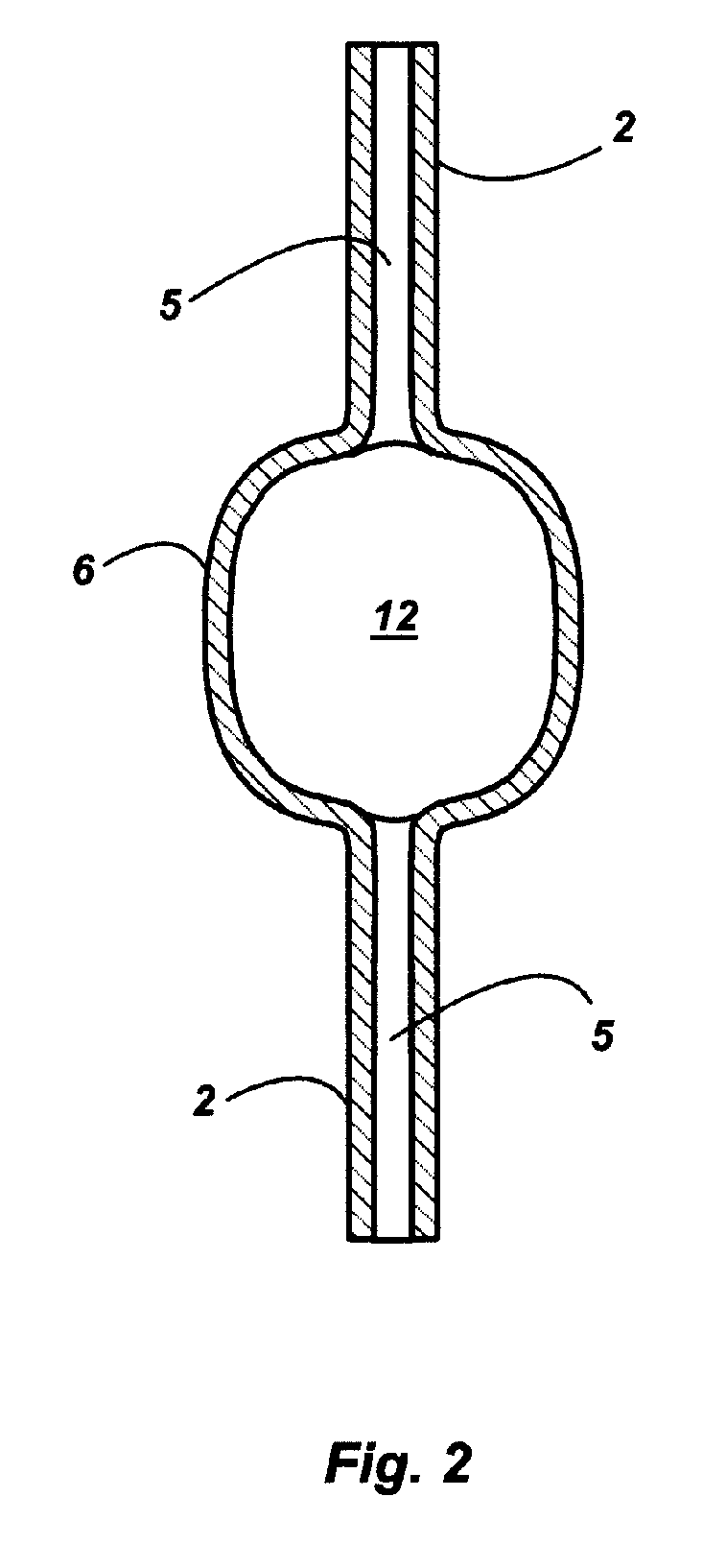Method of Making Ceramic Discharge Vessels Using Stereolithography
a technology of ceramic discharge vessels and stereolithography, which is applied in the manufacture of electric discharge tubes/lamps, cold cathode manufacture, electrode systems, etc., can solve the problems of adding significant time and cost to the process, and achieve the effect of reducing time and expens
- Summary
- Abstract
- Description
- Claims
- Application Information
AI Technical Summary
Benefits of technology
Problems solved by technology
Method used
Image
Examples
example
[0032] A liquid ceramic-resin mixture of 45 vol. % (25.4 wt. %) Al2O3 and 55 vol. % (74.6 wt. %) arcylate resin was used in the stereolithography process. The Al2O3 powder had a mean grain size, d50=0.6 μm. The acrylate resin was Photomer® 4006 from Cognis GmbH which is a highly functionalized trimethylolpropane triacrylate. This resin is preferred because it offers a better curing behavior as well as a higher density and better surface quality of the cured shape.
[0033] Prior to mixing with the acrylate resin, the Al2O3 powder was coated with 4 wt. % Disperbyk-180 (Byk Chemie) dispersant by dissolving the dispersant in distilled water and adding the Al2O3 powder gradually under constant stirring. The suspension was dried thereafter at 60° C.-80° C. in a drying oven until the water was completely removed. The dried mass was then finely ground and sieved, in order to separate large agglomerates.
[0034] The dispersant-coated Al2O3 powder was then dispersed in the acrylate resin while ...
PUM
| Property | Measurement | Unit |
|---|---|---|
| Temperature | aaaaa | aaaaa |
| Temperature | aaaaa | aaaaa |
| Temperature | aaaaa | aaaaa |
Abstract
Description
Claims
Application Information
 Login to View More
Login to View More - R&D
- Intellectual Property
- Life Sciences
- Materials
- Tech Scout
- Unparalleled Data Quality
- Higher Quality Content
- 60% Fewer Hallucinations
Browse by: Latest US Patents, China's latest patents, Technical Efficacy Thesaurus, Application Domain, Technology Topic, Popular Technical Reports.
© 2025 PatSnap. All rights reserved.Legal|Privacy policy|Modern Slavery Act Transparency Statement|Sitemap|About US| Contact US: help@patsnap.com



